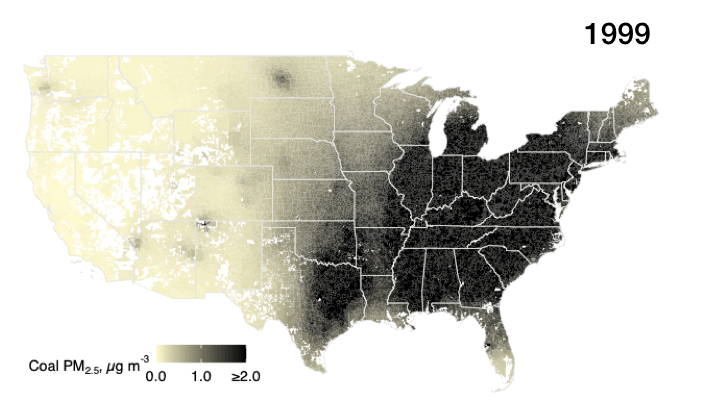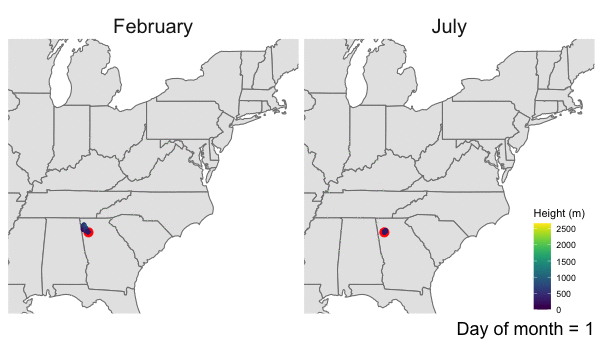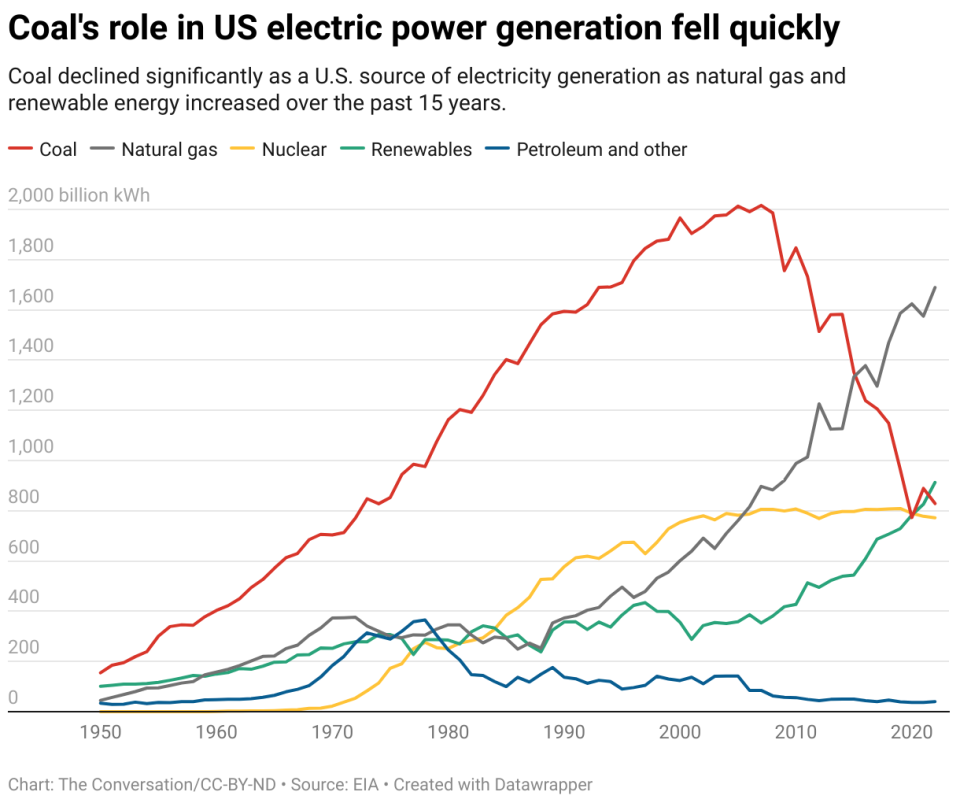Air pollution particles from coal-fired power plants are more harmful to human health than many experts realized, and are more than twice as likely to contribute to premature deaths as air pollution particles from other sources, new research shows .
In the study, published in the journal Science, my colleagues and I mapped how US coal power plant emissions traveled through the atmosphere, then linked each power plant’s emissions to the death records of Americans over age 65 on Medicare.
Our findings suggest that air pollutants released from coal-fired power plants were linked to nearly half a million premature deaths in older Americans from 1999 to 2020.
It’s a huge number, but the study also has good news: Annual deaths associated with US coal-fired power plants have fallen sharply since the mid-2000s as federal regulations forced operators to install emissions scrubbers and many utilities shut down coal plants completely.
In 1999, 55,000 deaths were attributable to coal-fired air pollution in the US, according to our findings. By 2020, that number had fallen to 1,600.

In the United States, coal is being displaced by natural gas and renewable energy to generate electricity. Worldwide, however, the use of coal is expected to increase in the coming years. Our findings are therefore even more urgent for global decision-makers to understand when developing future policies.
Coal air pollution: What makes it so bad?
A landmark study in the 1990s, called the Harvard Six Cities Study, linked tiny airborne particles called PM2.5 to an increased risk of early death. Other studies have since linked PM2.5 to lung and heart disease, cancer, dementia and other diseases.
Following that research, the Environmental Protection Agency began regulating PM2.5 concentrations in 1997 and the acceptable limit has been lowered over time.
PM2.5 – particles small enough to be inhaled deeply into our lungs – comes from a number of different sources, including the burning of gasoline in vehicles and smoke from wood fires and power plants. It is made up of many different chemicals.
Coal is also a mixture of many chemicals – carbon, hydrogen, sulphur, even metals. When coal is burned, all these chemicals are emitted into the atmosphere as gases or particles. Once there, they are carried by the wind and interact with other chemicals already in the atmosphere.
As a result, anyone exposed to coal plant wind could be inhaling a complex cocktail of chemicals, each with their own potential effects on human health.


Trace coal PM2.5
To understand the risks of coal emissions to human health, we tracked how sulfur dioxide emissions from each of the 480 largest coal-fired power plants in the U.S. operating at any point since 1999 have traveled with the wind and turned them into tiny particles – coal PM2.5. We used sulfur dioxide because of its known health effects and huge reductions in emissions during the study period.
We then used a statistical model to link coal PM2.5 exposure to the Medicare records of nearly 70 million people from 1999 to 2020. This model allowed us to calculate the number of coal PM2.5-related deaths.
In our statistical model, we controlled for other pollution sources and accounted for many other known risk factors, such as smoking status, local meteorology and income level. We tested multiple statistical approaches that all yielded consistent results. We compared the results of our statistical model with previous results that tested the health impacts of PM2.5 from other sources and found that PM2.5 from coal is twice as harmful as PM2.5 from all other sources.
The number of deaths associated with individual power stations depended on multiple factors – how much the plant emits, which way the wind blows and how many people breathe the pollution. Unfortunately, US utilities have located many of their plants downwind of large population centers on the East Coast. This location increased the influence of these factories.
In an interactive online tool, users can view our estimates of annual deaths associated with each US power plant and also see how those numbers have fallen over time at most US coal plants.
A success story in the United States and the global future of coal
Engineers have been designing efficient scrubbers and other pollution control devices that can reduce pollution from coal-fired power plants for several years. And the EPA has rules specifically to encourage utilities that used coal to install them, and most facilities that didn’t install scrubbers have been shut down.
The results were dramatic: sulfur dioxide emissions were reduced by about 90% in facilities that reported installing scrubbers. Nationwide, sulfur dioxide emissions have decreased by 95% since 1999. According to our calculations, the number of deaths attributable to each facility that installed or closed a scrubber decreased significantly.


As advances in fracking techniques reduced the cost of natural gas, and regulations made running more expensive coal plants, utilities began to replace coal with natural gas plants and renewable energy. The switch to natural gas – a fossil fuel that burns cleaner than coal but is still a greenhouse gas that contributes to climate change – has reduced air pollution even more.
Today, coal provides about 27% of electricity in the US, down from 56% in 1999.
Globally, however, the outlook for coal is mixed. While the US and other nations are moving toward a future with far less coal, the International Energy Agency expects global coal use to increase by at least 2025.
Our study and others like it show that increases in coal use will harm human health and the climate. Making full use of emissions controls and a shift towards renewable energy are sure ways to reduce the negative impacts of coal.
This article is republished from The Conversation, a non-profit, independent news organization that brings you reliable facts and analysis to help you make sense of our complex world. The Chat is trusted news from experts. Try our free newsletters.
It was written by: Lucas Henneman, George Mason University.
Read more:
Lucas Henneman receives funding from the Health Effects Institute, the National Institutes of Health, and the Environmental Protection Agency.